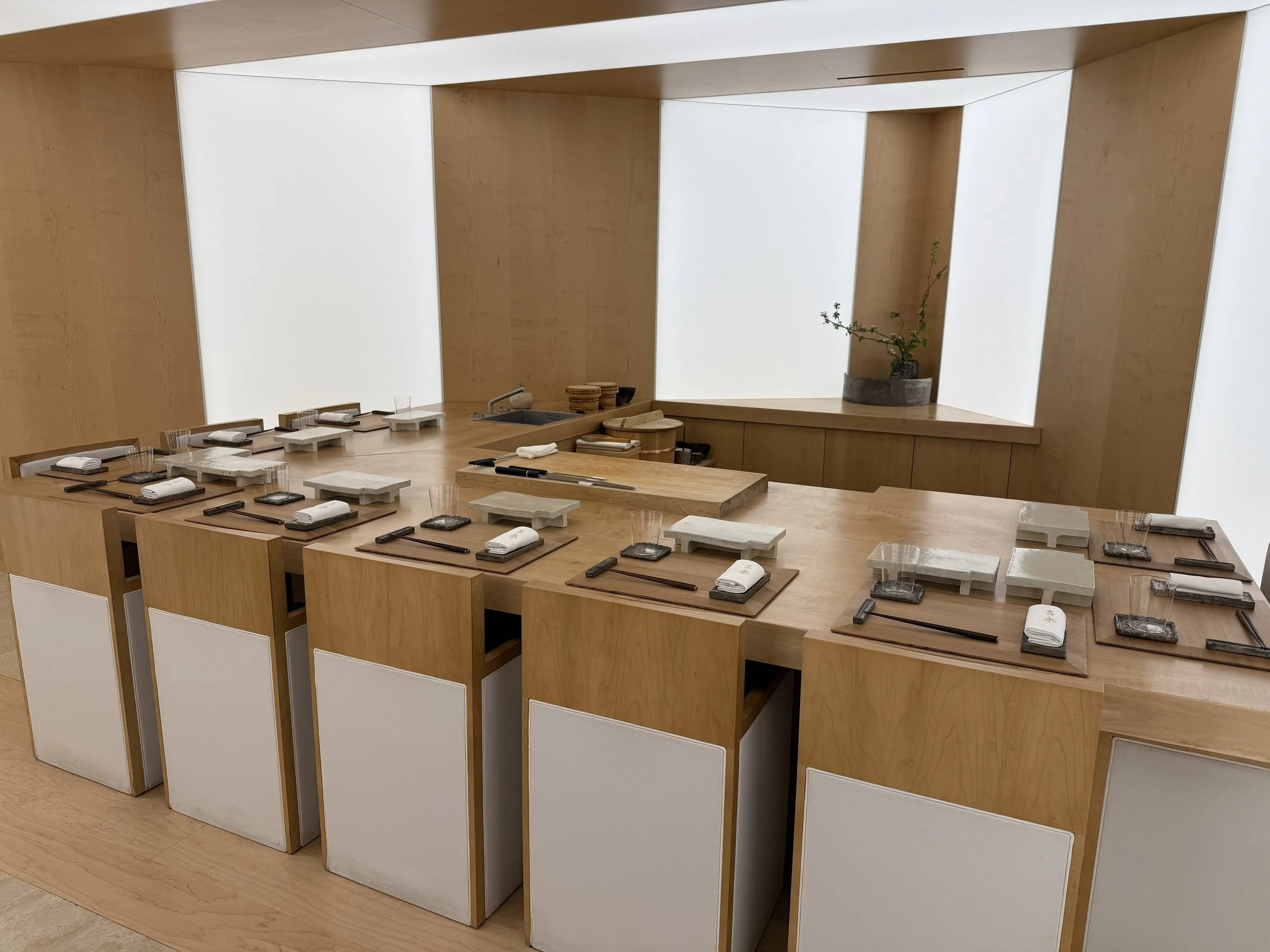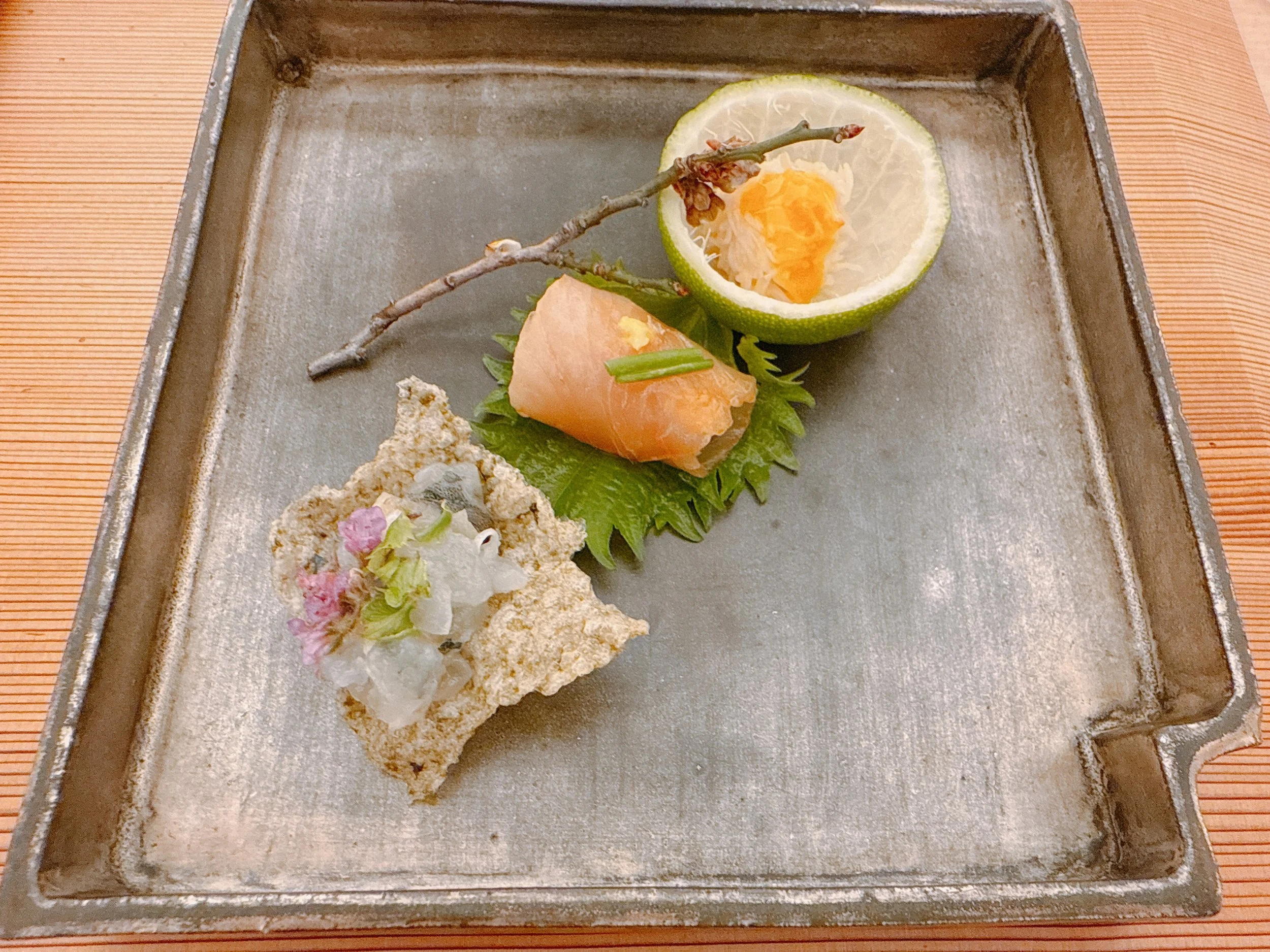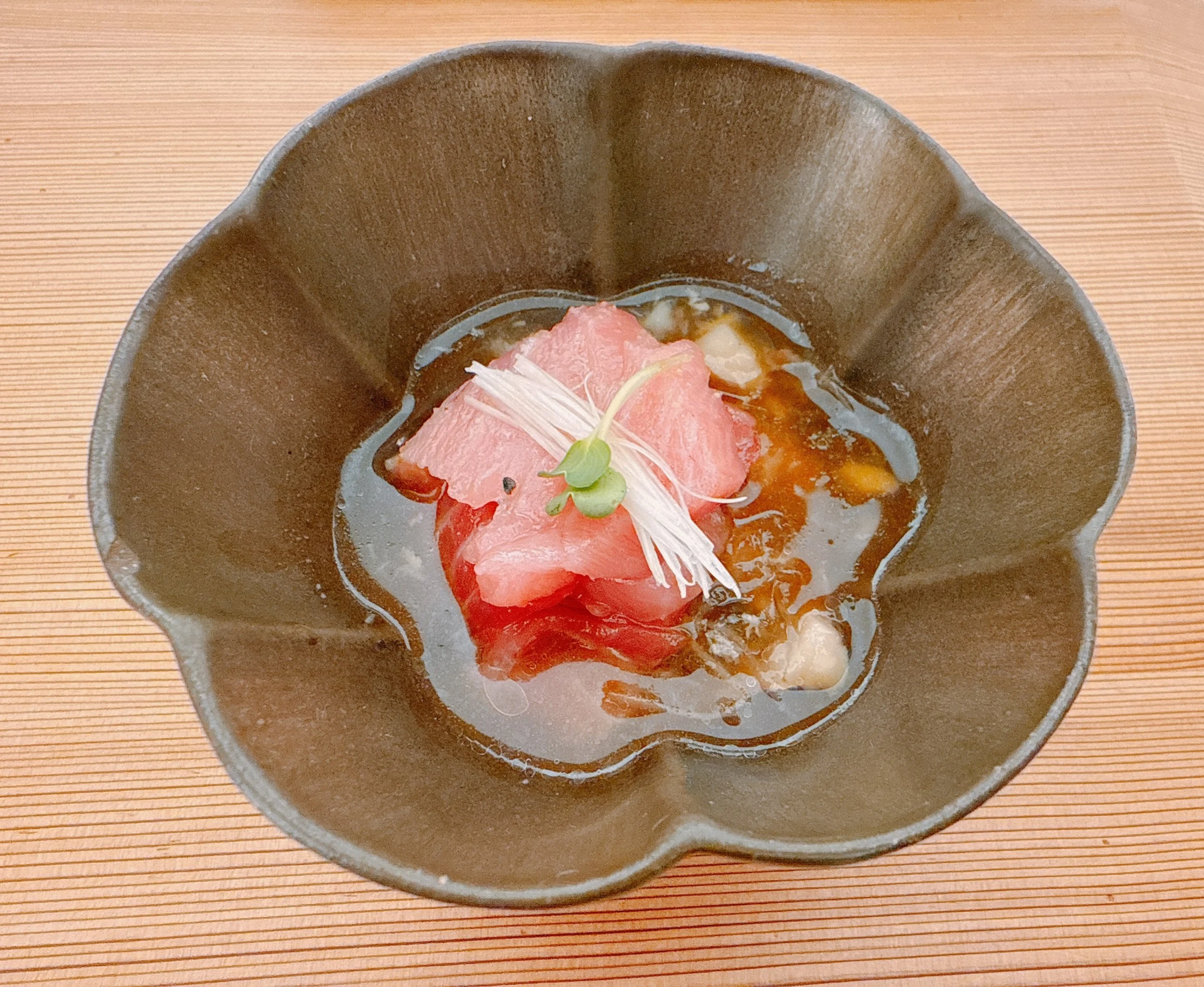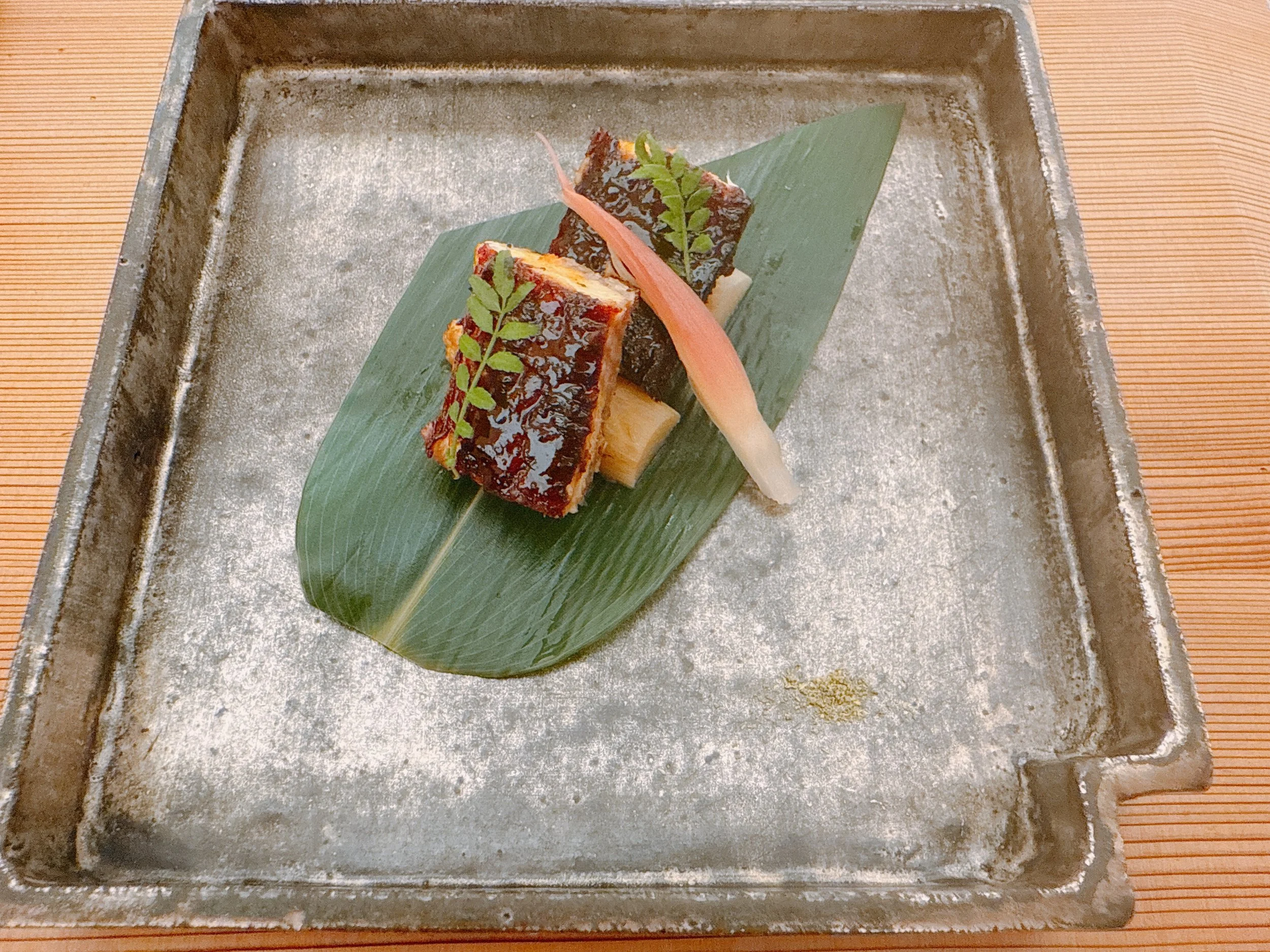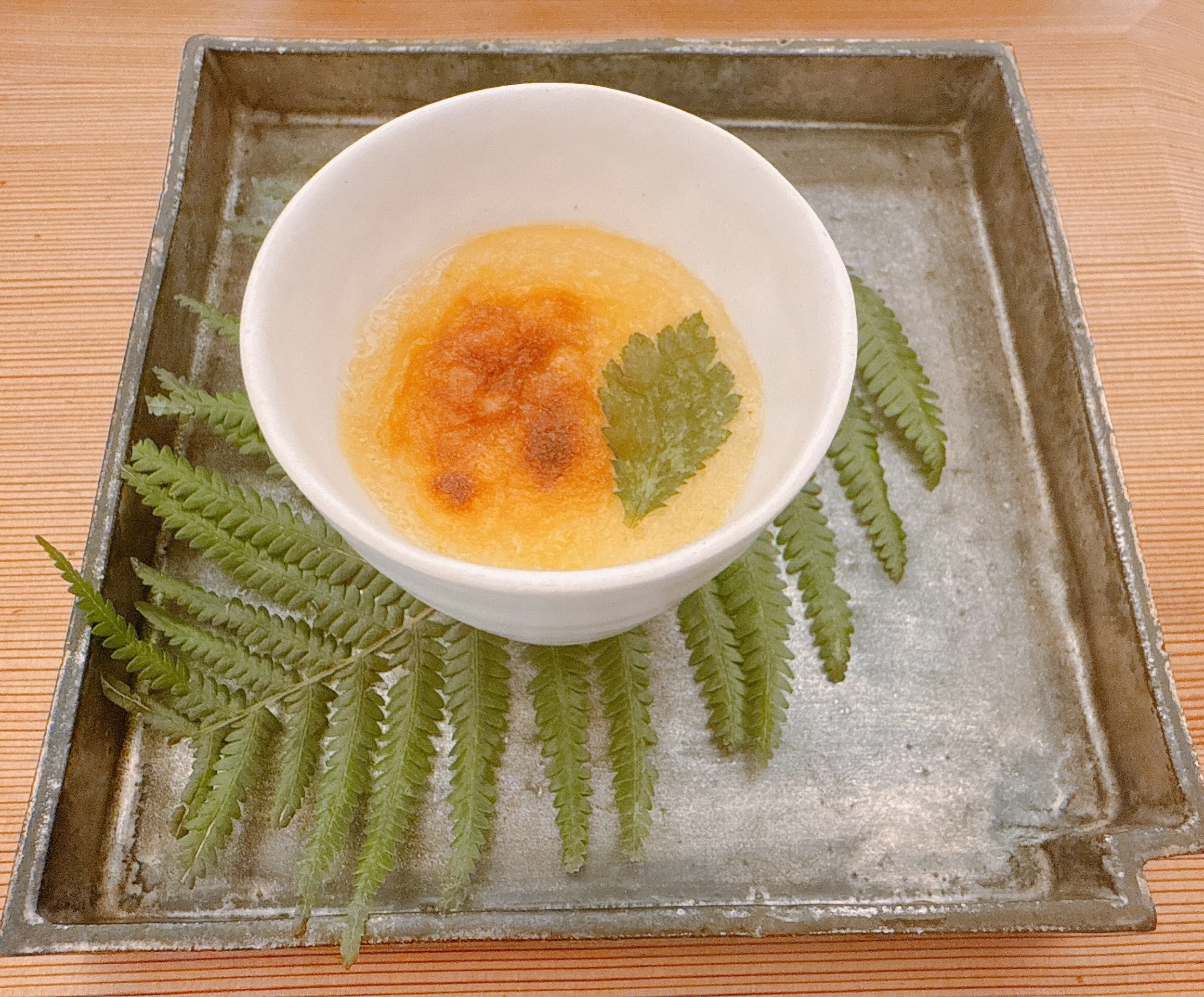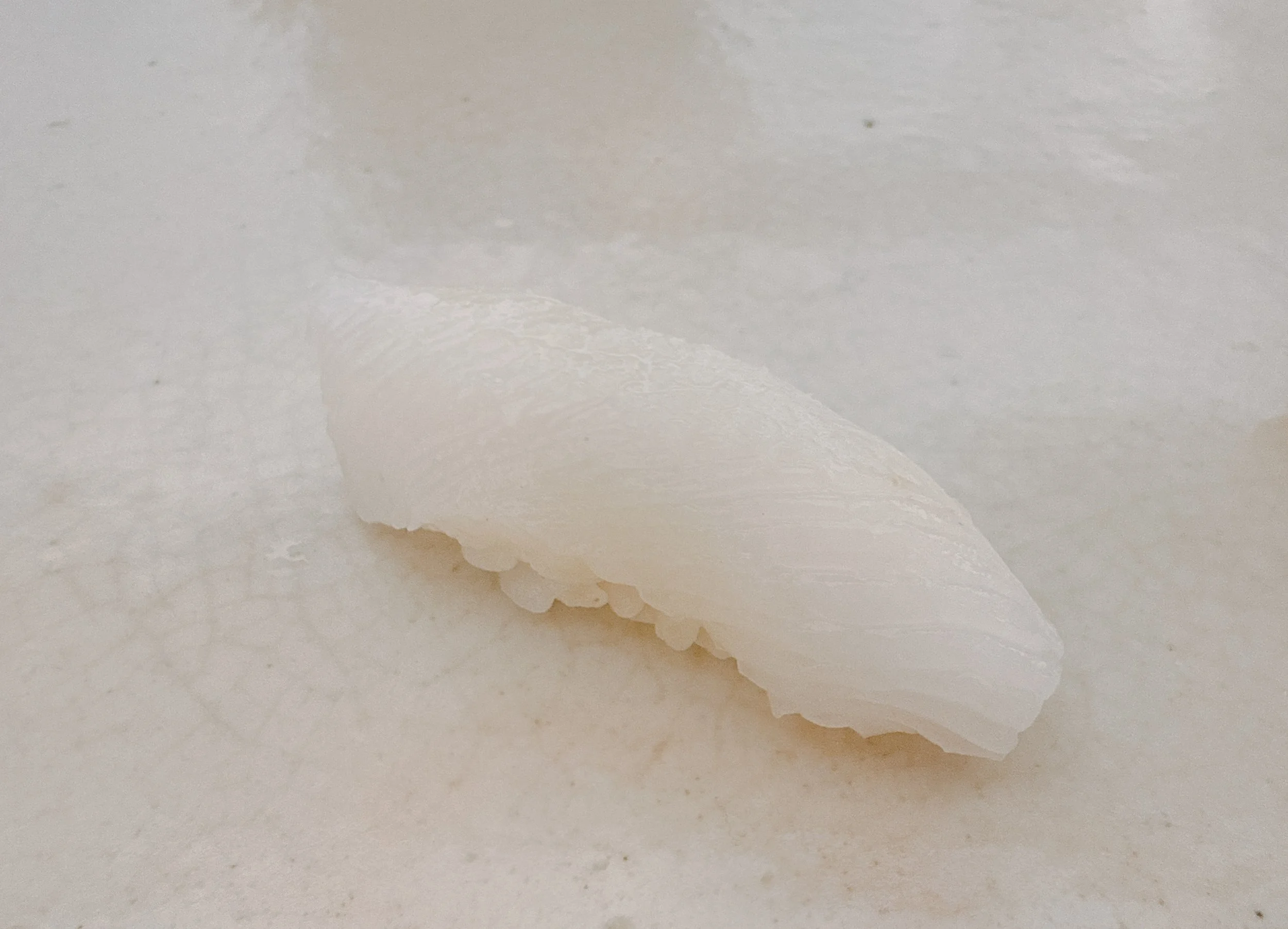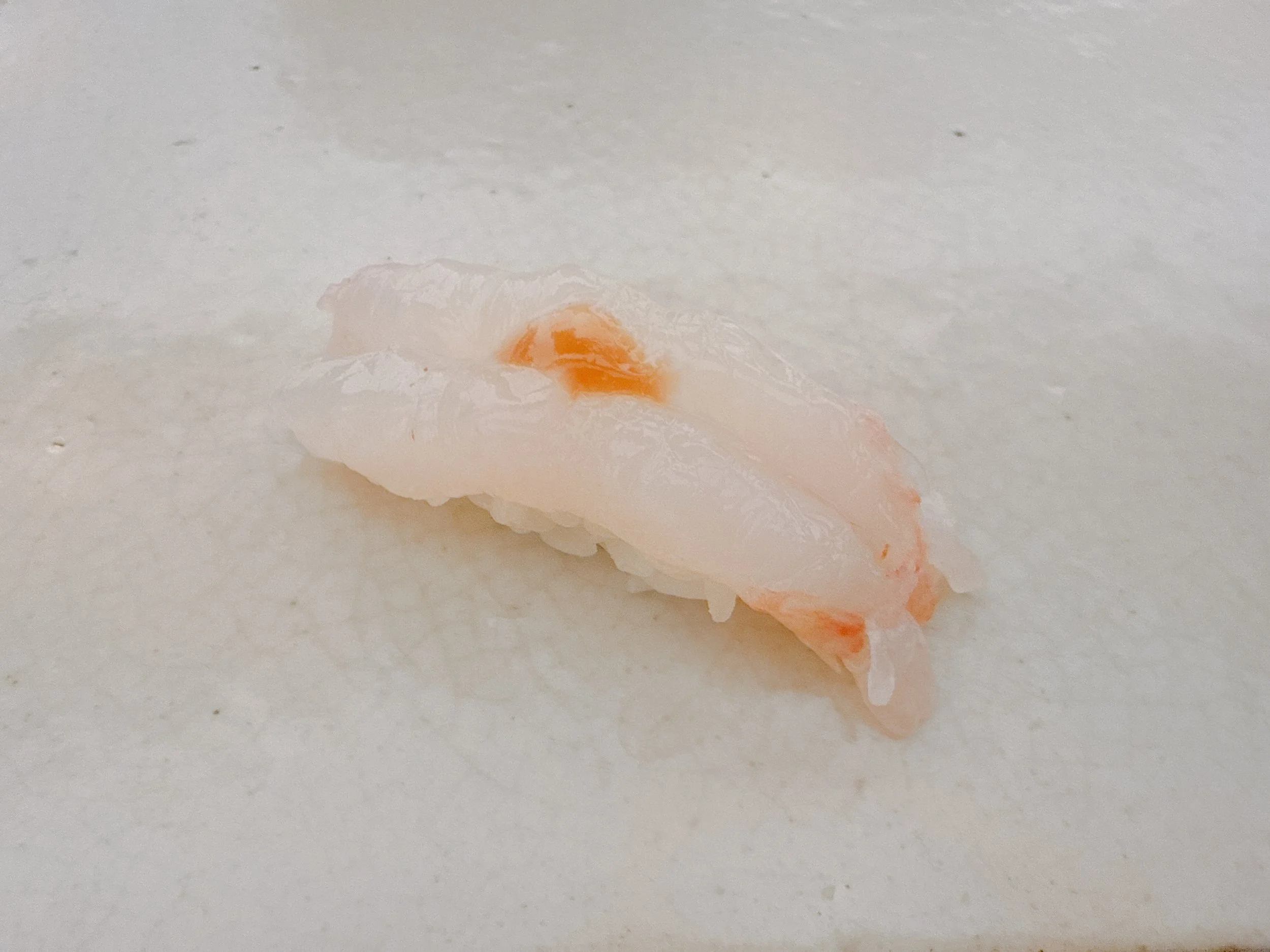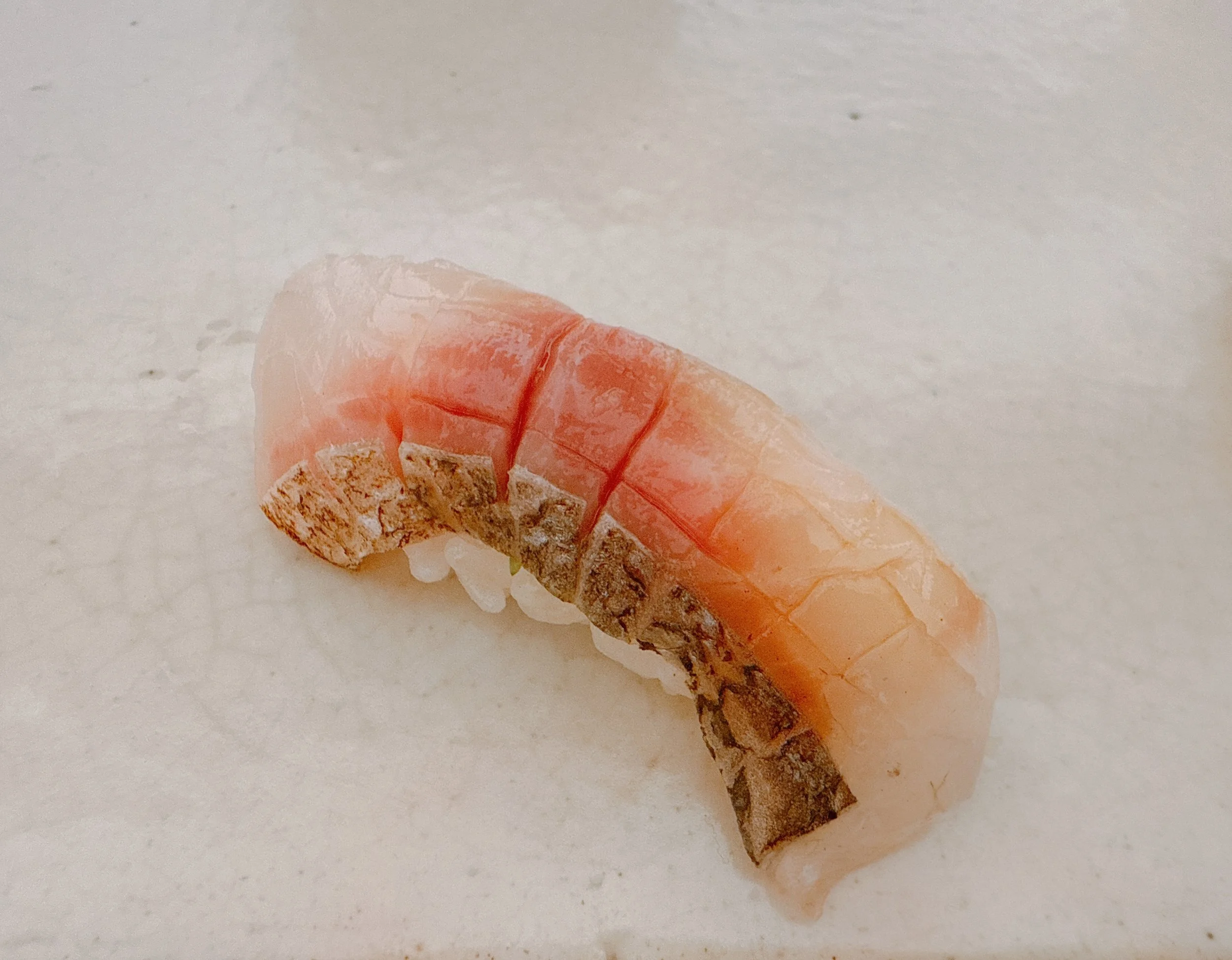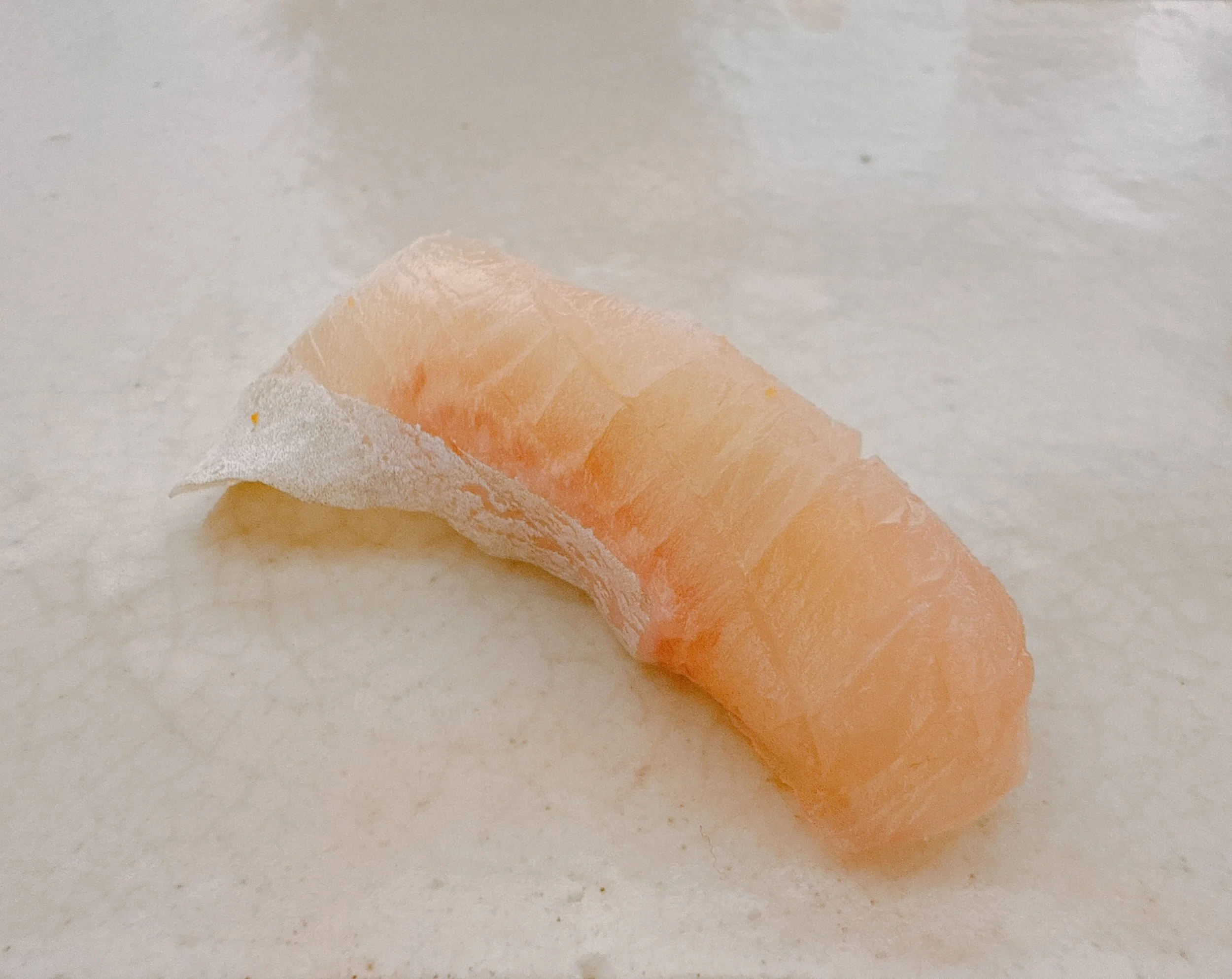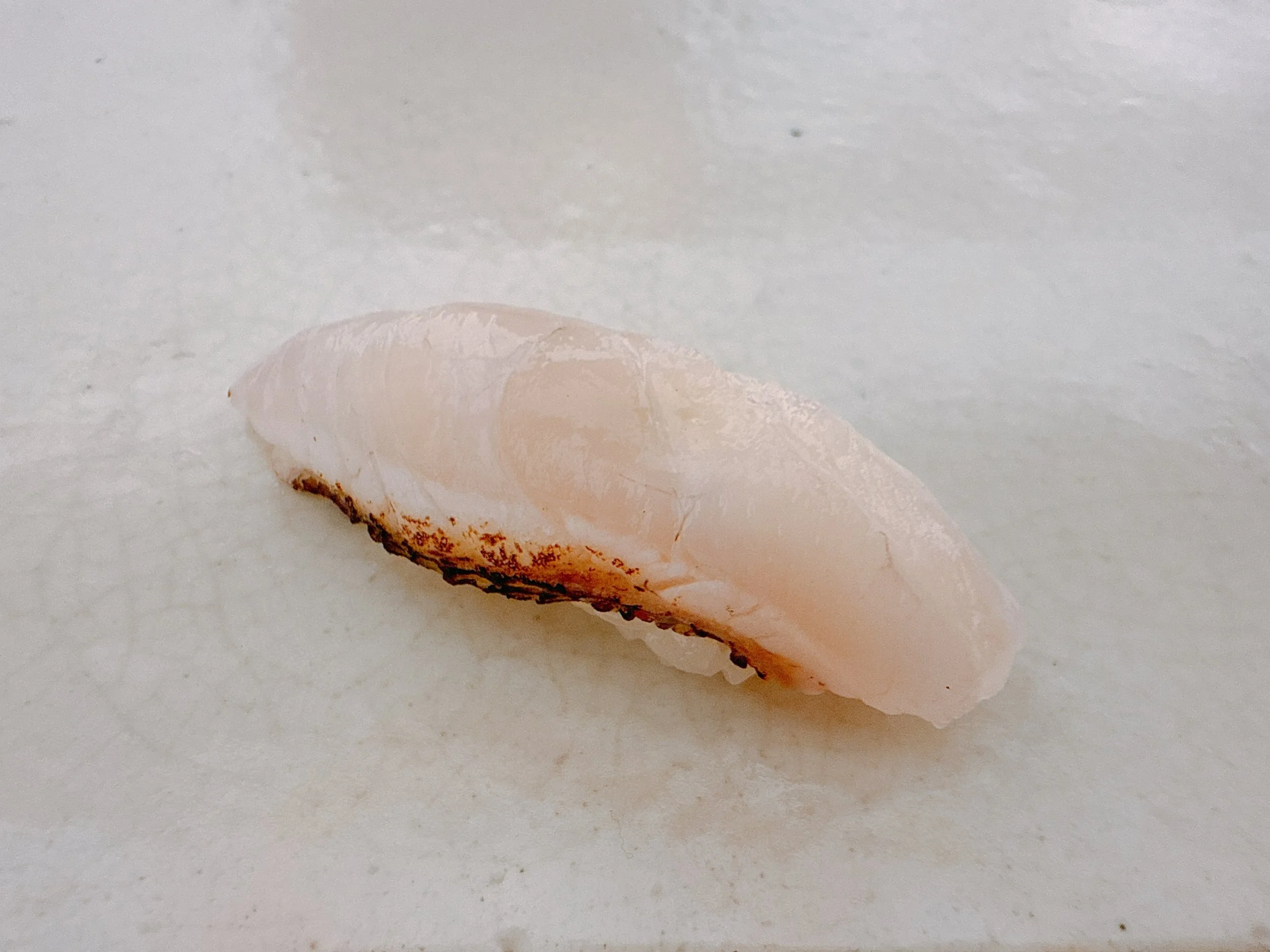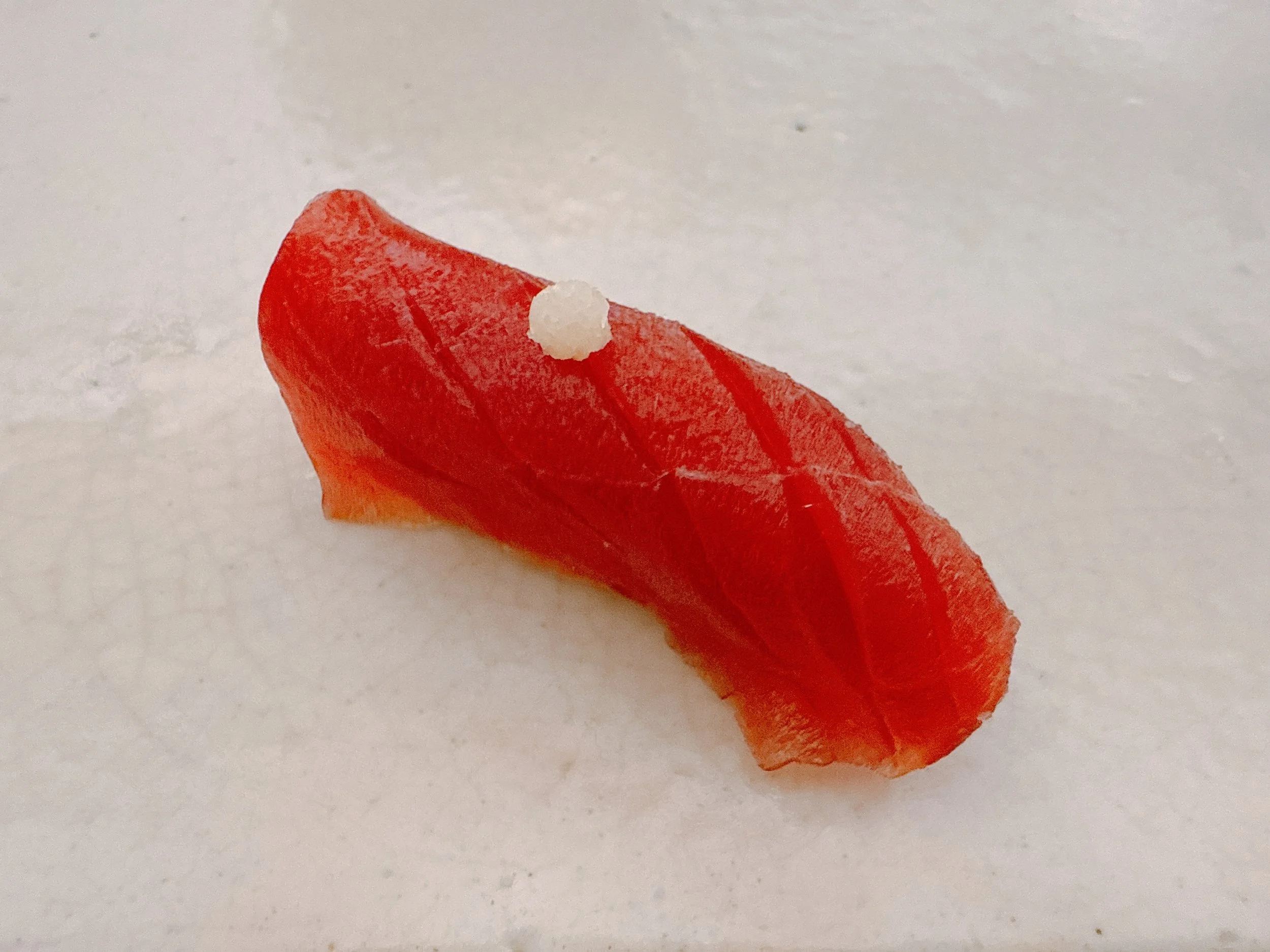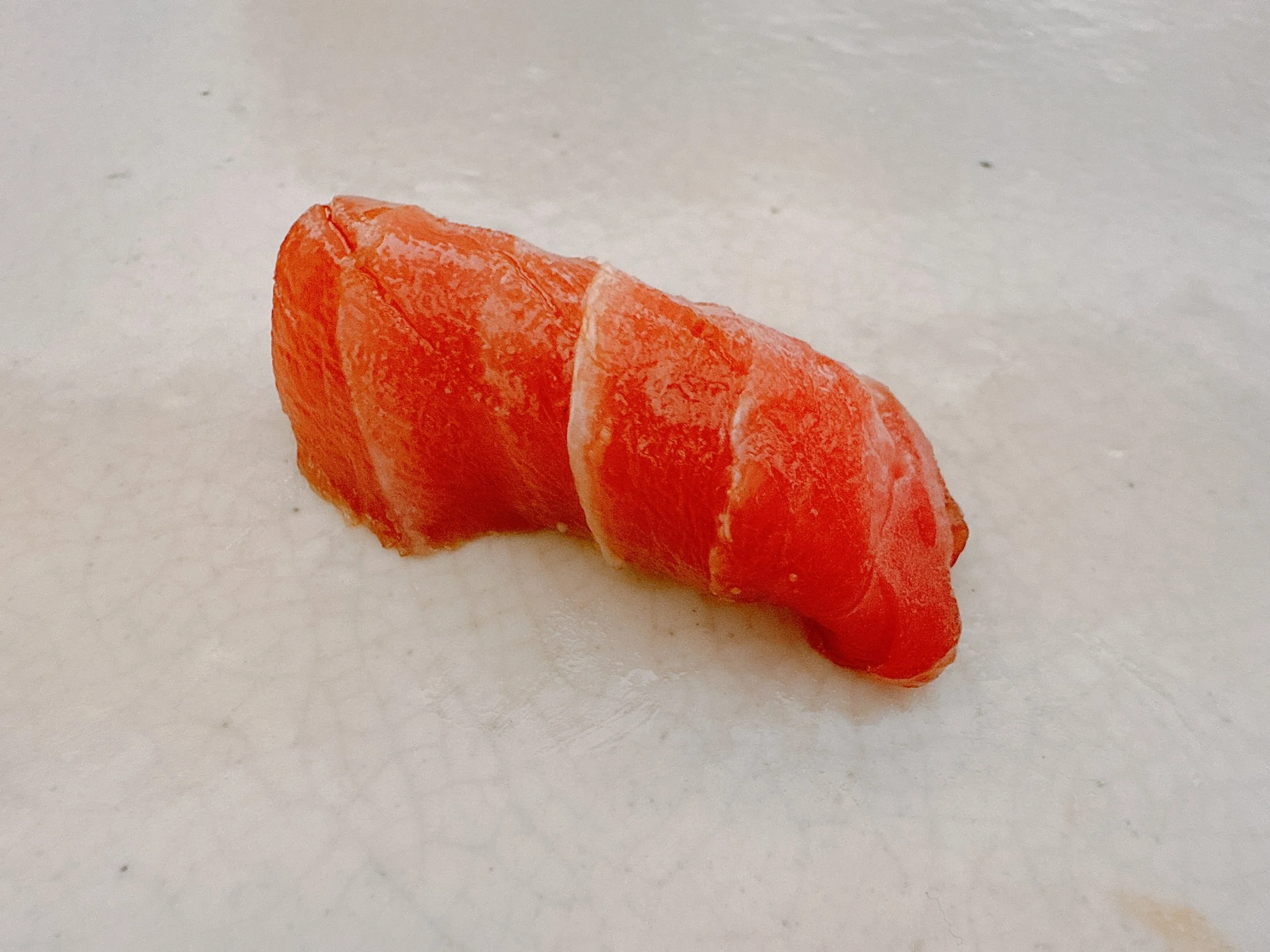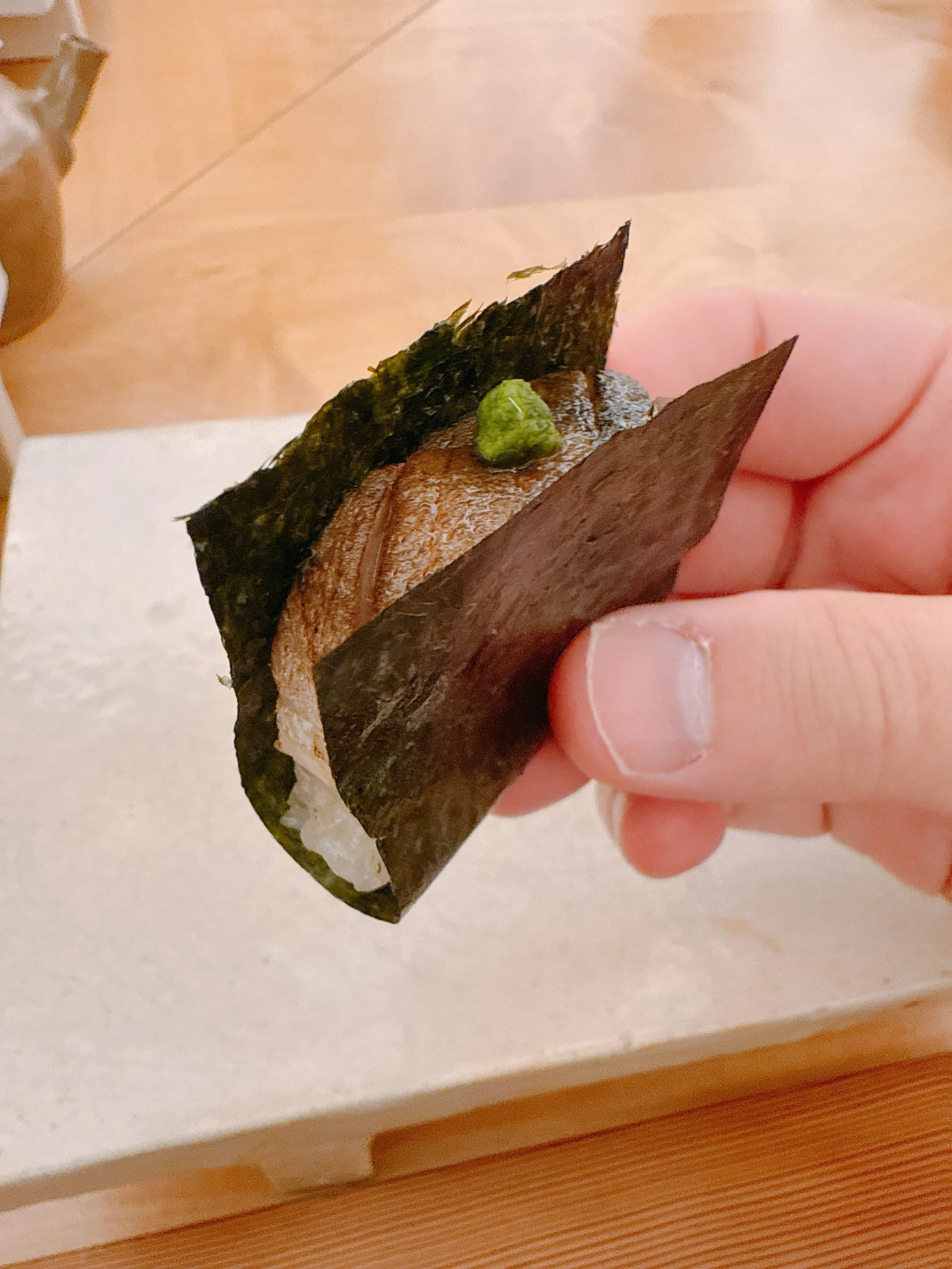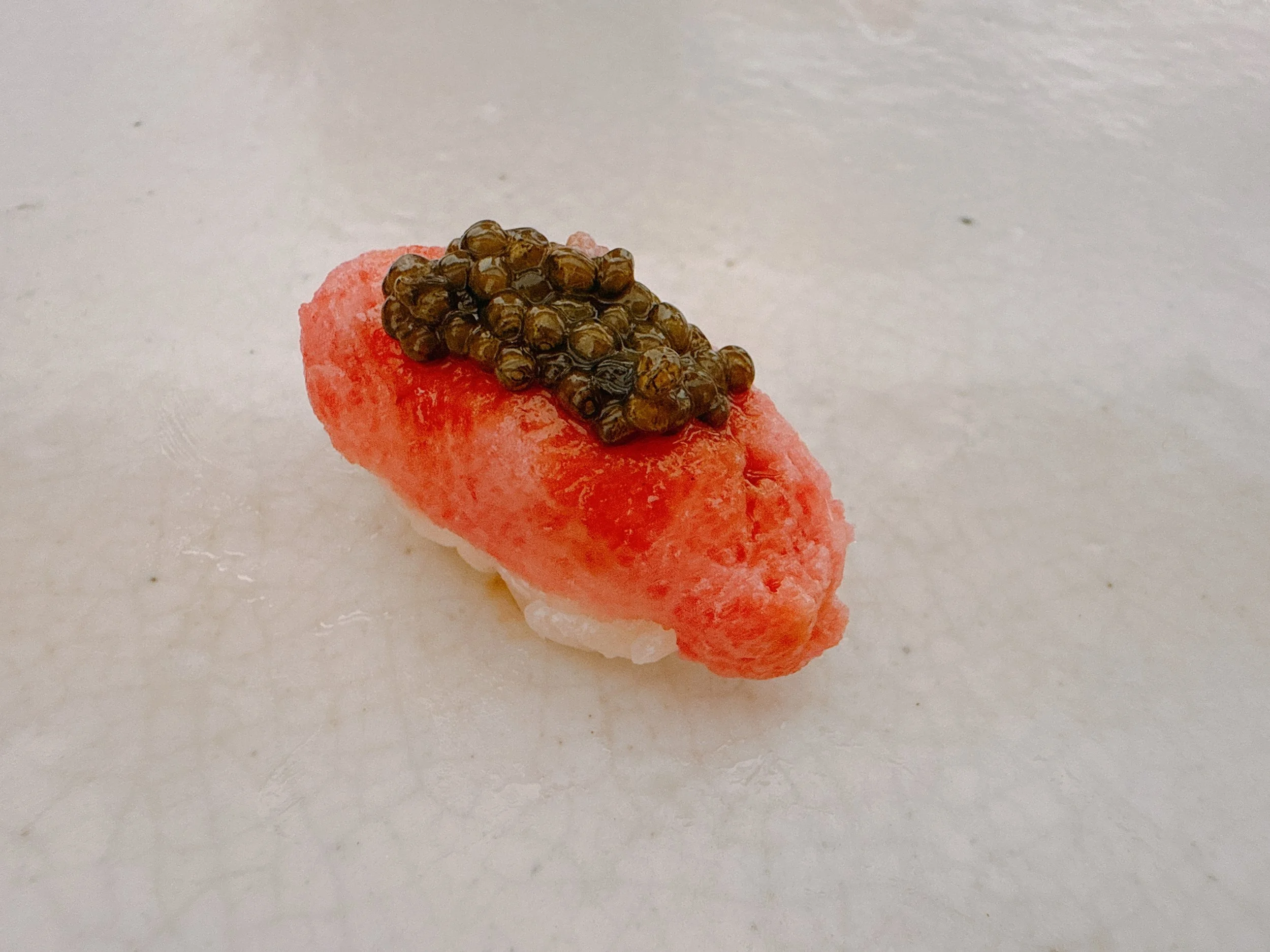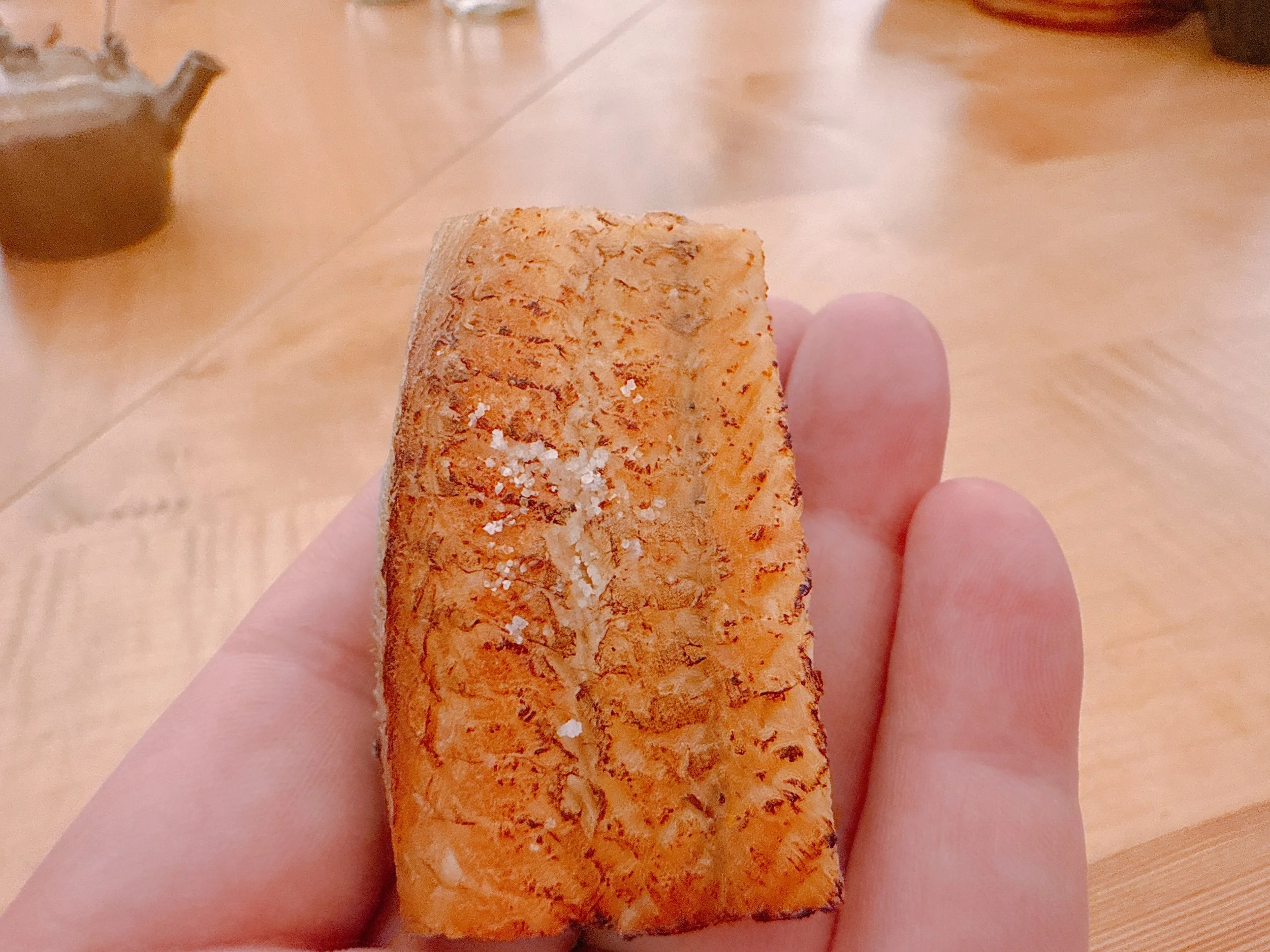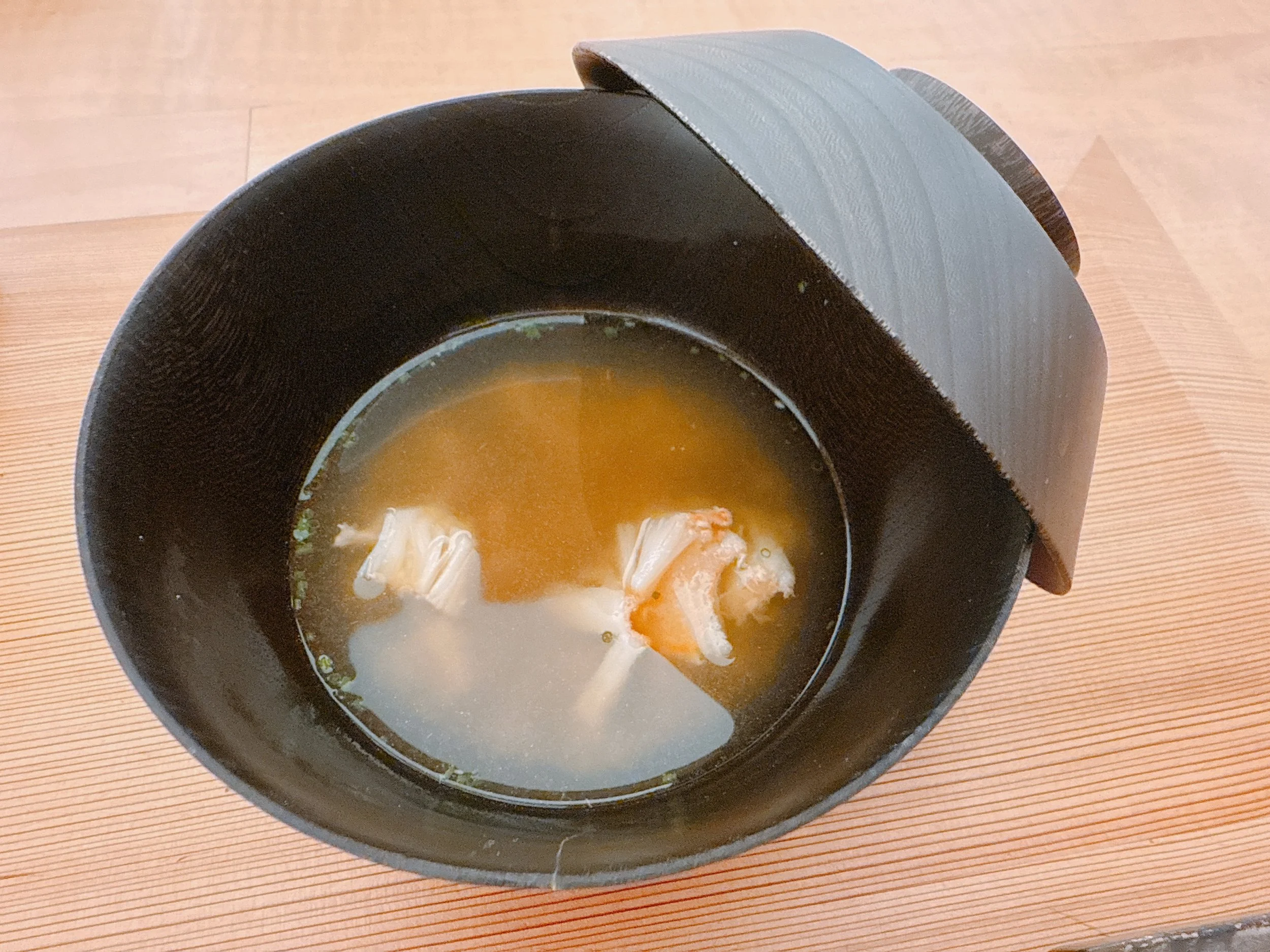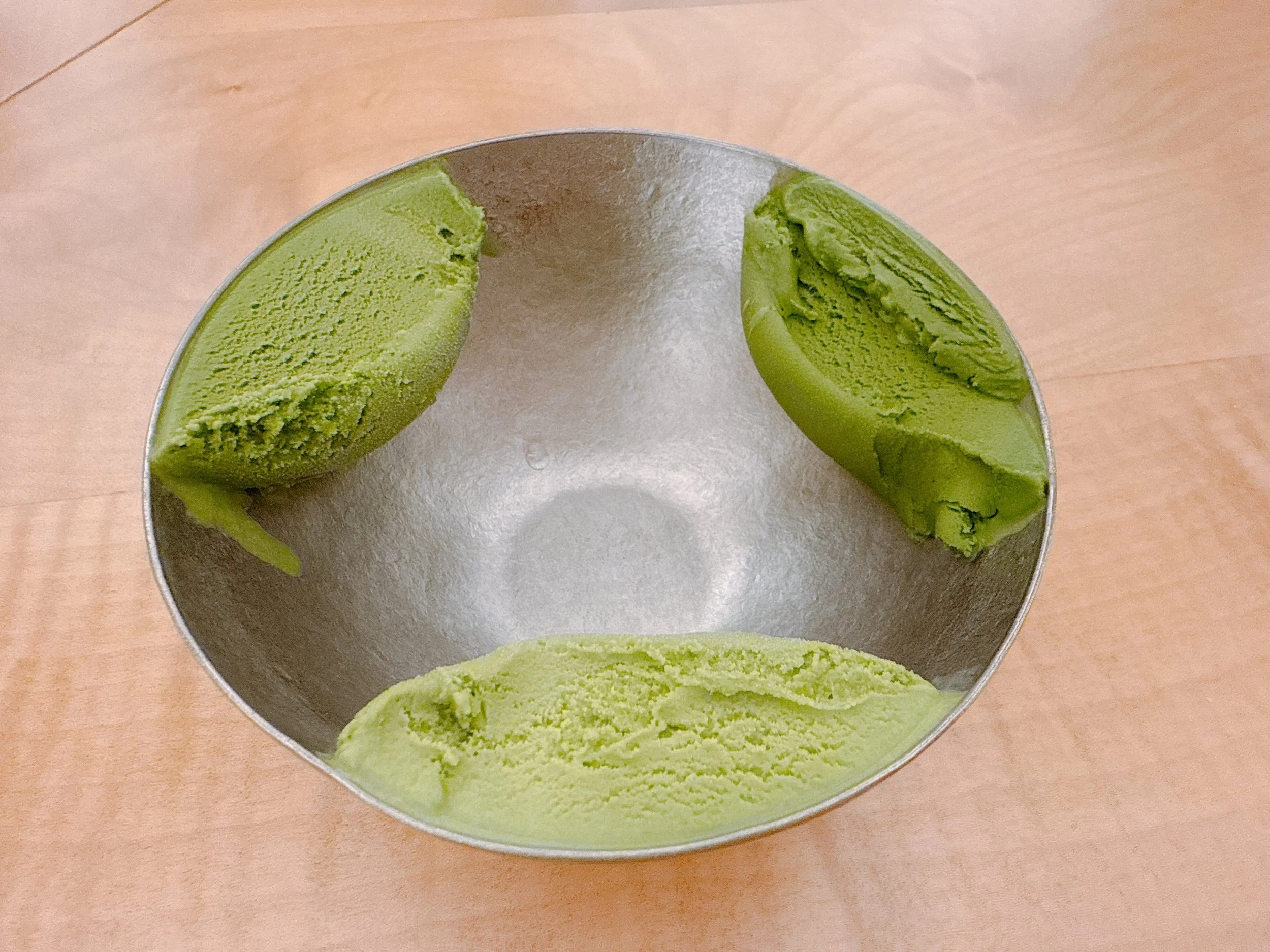Sushi Yoshinaga - Paris
Rating: 17/20
Where: Paris, France
When: Dinner for 3 on 22 April 2025
Cost per Person: Tasting menu 330 Euro, Beverage pairing 75-110 Euro
Accolades: 2 Michelin Stars
Why: Excellent sushi with some interesting adaptations for French palates
At first glance, it might seem odd to travel halfway around the world to Paris, just to eat at a sushi restaurant. My goal was to have a lighter meal before indulging in more traditional French fare thereafter. And newly two-Michelin-starred “Sushi Yoshinaga” nicely fit that bill. But this somewhat accidental visit turned out to be an eye-opener: it was very interesting to see how a Japanese chef adapted his (traditionally structured) sushi menu to suit the preferences of French diners. It's probably better to take some liberties with a cuisine and have a full restaurant rather than combine 100% authenticity with 50% empty seats. I'll highlight the most interesting deviations from “classic” Japanese cuisine below, but don't consider them complaints - most dishes were quite tasty, and I'll take that over culinary purity any day.
We arrived a few minutes early for our 7pm seating, and were escorted up a spiral staircase to the brightly lit dining room, where chef Yoshinaga was just starting to slice the fish for our dinner. Eight of the ten counter seats were occupied during our visit, with six of us being from out of town. The chef spoke good English, and was happy to answer questions about the details of his sushi preparation. Since the dinner was omakase style, no food-related decisions needed to be made. A beverage pairing was available: three glasses for 75 Euro or five for 110 Euro. In either case, one was able to choose between champagne, wine, sake, or a combination of the three. I'm not sure whether ordering the pairing was actually cheaper than simply going by the glass, but it made the decision process easier. My mixed pairing was quite enjoyable, but five glasses turned out to be a lot for a relatively light dinner that lasted only 1 1/2 hours.
When our dinner commenced, the lights were dimmed, and a series of appetizers appeared from an out-of-sight kitchen. The first serving consisted of three little bites. A French shrimp tartare was served on a cracker with a green apple jelly. Crunchy, fresh, and fruity with a hint of shiso - a light beginning 17. Next, a shiso leaf was used to wrap a soy-sauce-simmered ankimo (monkfish liver) and yellowtail sashimi. The fish was of good quality, the ankimo added creaminess and the shiso leaf some fresh taste 17. Finally, marinated and steamed crab meat was served with an egg yolk sauce. The crab was lightly salty, and the egg yolk provided umami to the dish 16.
The next dish: otoro tuna that had been smoked and grilled was served with grated daikon, wasabi, a vinegar sauce, sea bream and a jelly made from sea bream bones. This dish had a lot of flavor - more than a comparable dish might have had in Japan. The tuna was quite salty and was permeated with the sauce, taking up much of the sauce's flavor. There was also some acidity from the vinegar. Quite tasty, but the abundance of flavors also meant that it was missing some of the refinement that one might expect in Japanese cuisine 17.
Eel from the Loire had been roasted and grilled, which resulted in a very crispy skin. It was served with dashi-marinated white asparagus, pickled Japanese ginger and a bit of sansho pepper on the side to be added as desired. The eel had an unusual texture: it was very crunchy - so much so that the meat almost disappeared in the tasting experience. Less crunchiness might have been better here. The asparagus was very (maybe too) soft and had soaked up plenty of sauce. The sansho pepper didn't make much of a difference, since there wasn’t too much of it 16.
Our last appetizer was a chawanmushi (Japanese egg custard) that contained shrimps, an oyster and shimeji mushrooms. It was seasoned with a white miso/yuzu sauce. Unlike most chawanmushi that I've seen, though, this one had been baked to create a lightly browned top. The custard, shrimp, mushrooms, and sweet yuzu flavors were quite nice, the only letdown was the extremely chewy oyster 16.
This brought us to the main part of the omakase: a series of thirteen nigiri pieces and handrolls. First up was a squid nigiri with an essentially perfect texture: nicely creamy. It was seasoned to be both salty and acidic, and these aspects were very well balanced for such a strongly flavored bite. Again, more flavor than one would have used in Japan, but very, very tasty 19.
A langoustine nigiri was topped with a tiny dollop of plum. This bite had lots of flavor as well: yuzu (I think), some acidity, and spice from fresh wasabi. The texture of the langoustine was excellent as well 19.
The next nigiri used a “black snapper”. Compared to the previous, creamier seafood, this one had a more pronounced texture and was quite aromatic. A shiso leaf added to the flavor 18.
Yellowtail nigiri had been seasoned with citrus zest. Another fish of nice quality 18.
Red snapper was seasoned with a sakura soy sauce (the theme here was “pink-colored food”). The fish had a creamy texture, was noticeably smoky and had a bit of spice. Delicious 17.
A French lobster had been marinated in miso for four days, then chopped up and served on top of rice. It had a very soft texture - there was nothing to chew on here. Nice, but maybe not a very Japanese kind of sushi 17.
Next up was a trio of tuna nigiri. Bluefin tuna was topped with a piece of onion. The fish was of good quality and the (un-Japanese) onion gave it a bit of spice 17. Chutoro (medium fatty tuna) was quite nice as well 17. Even better was the lightly marinated otoro (fatty tuna) 18.
Mackerel was served with rice and some crunchy vegetables in a hand-held piece of nori. Nice 17.
The chef introduced the next dish with an apology. Japanese sushi doesn't usually incorporate caviar, but he said that he learned that French customers love (or even expect) caviar in fine dining, so he decided to create a caviar dish. Otoro tartare was served nigiri-style on rice, and was seasoned with a white miso/marinated cream cheese (!) sauce and topped with a bit of caviar. This dish couldn't have been mistaken for Japanese even by the most inattentive observer. And admittedly, it tasted somewhat odd, thanks to its cream cheese flavor. I felt that the rice could have used a bit more acidity to cut through the fattiness of the fish. Not bad, and an interesting experience, but I think I would have liked this better without the cream cheese sauce 16.
An eel nigiri was placed directly on our hands. Very creamy, but with only a light flavor 16.
Finally, a hand roll made with otoro, rice, shiso, ginger, garlic was served inside a toasted nori sheet. The chef mentioned that he is the only one in France to use this special type of nori which is also served at Tokyo's famous Sushi Saito. Good nori, but not quite as transcendent as this introduction might have suggested. The contents of the hand roll were spicy and creamy, but didn't taste much of fish, and instead seemed to also have a bit of a cheese flavor (possibly my mind was playing tricks after the caviar dish, though) 17.
The end of the nigiri run was maybe most notable by what it didn't include - a piece of tamago. The chef said that he used to serve this traditional egg dish, but his French customers didn't care for it much, so he finally decided that the two-hour preparation time was better spent elsewhere.
Instead, we went straight to a lobster miso soup with a fragrant lobster flavor 16.
The dessert was a serving a three different matcha ice creams that only differed by the amount of matcha used, increasing by 1% increments in concentration. The ice creams were all made by Alain Ducasse's ice cream manufactory exclusively for the restaurant. This was good ice cream, and it was definitely fun to follow the flavor progression, starting at sweet and ending at quite tart 16.
Overall: An enjoyable sushi dinner with a friendly chef who was happy to chat about anything sushi-related. As is often true in Japan (but harder due to the language barrier), the more one talks to the chef, the better time one will have. Flavors were much stronger here than one would see in Japan, but remained well balanced. The sushi portion of the meal was particularly strong, starting at an exceptionally high level, but declined a bit throughout the sequence. If one is curious about what high-end, non-purist, host-country-influenced sushi looks like, then Sushi Yoshinaga is a worthwhile visit 17.
